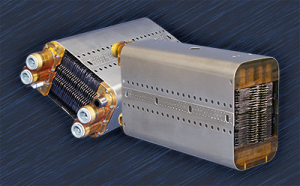 Northwest UAV (NWUAV) and the U.S. Naval Research Laboratory (NRL) successfully completed preliminary operational testes for a hydrogen fuel cell propulsion system.
Northwest UAV (NWUAV) and the U.S. Naval Research Laboratory (NRL) successfully completed preliminary operational testes for a hydrogen fuel cell propulsion system.
The fuel cell prototype is designed for the power-to-weight ratio and operational requirements needed for unmanned systems, according to a news release. NWUAV and NRL plan to further develop the prototype and perform a test flight later this year.
“It is very gratifying to turn research sustained by the Office of Naval Research into a commercial product,” said Dr. Karen Swider-Lyons, director of the Laboratory of Autonomous Systems Research at NRL, according to the release. “With new manufacturing support from the Department of Defense Manufacturing Technology Program and a cooperative agreement we are creating a new generation of aerial propulsion technology that will greatly advance the capabilities of our warfighters.”
The Proton Exchange Membrane (PEM) Fuel Cell creates electricity through the direct electrochemical process of turning hydrogen into water, which allows for the modularity and scalability necessary to meet power requirements for various unmanned systems. It is compact, lightweight and reliable, and its combination of fuel cells and hydrogen leads to long endurance electric propulsion.
The fuel cell’s design is based on 15 years of research on hydrogen fuel cells and dozens of flights on unmanned systems. The stackable design is customizable to fit different propulsion requirements.
“The unmanned systems industry is rapidly evolving. Qualities like reliability, maintenance, operating cost, and efficiency are becoming increasingly significant to manufacturers and their end users,” NWUAV Chief Technical Officer Jeff Ratcliffe said, according to the release. “Hydrogen fuel cells have very few moving parts resulting in high reliability and low maintenance. They promise the long endurance of an internal combustion system at the low operating costs of battery powered systems, creating a compelling value proposition for the unmanned systems industry.”






